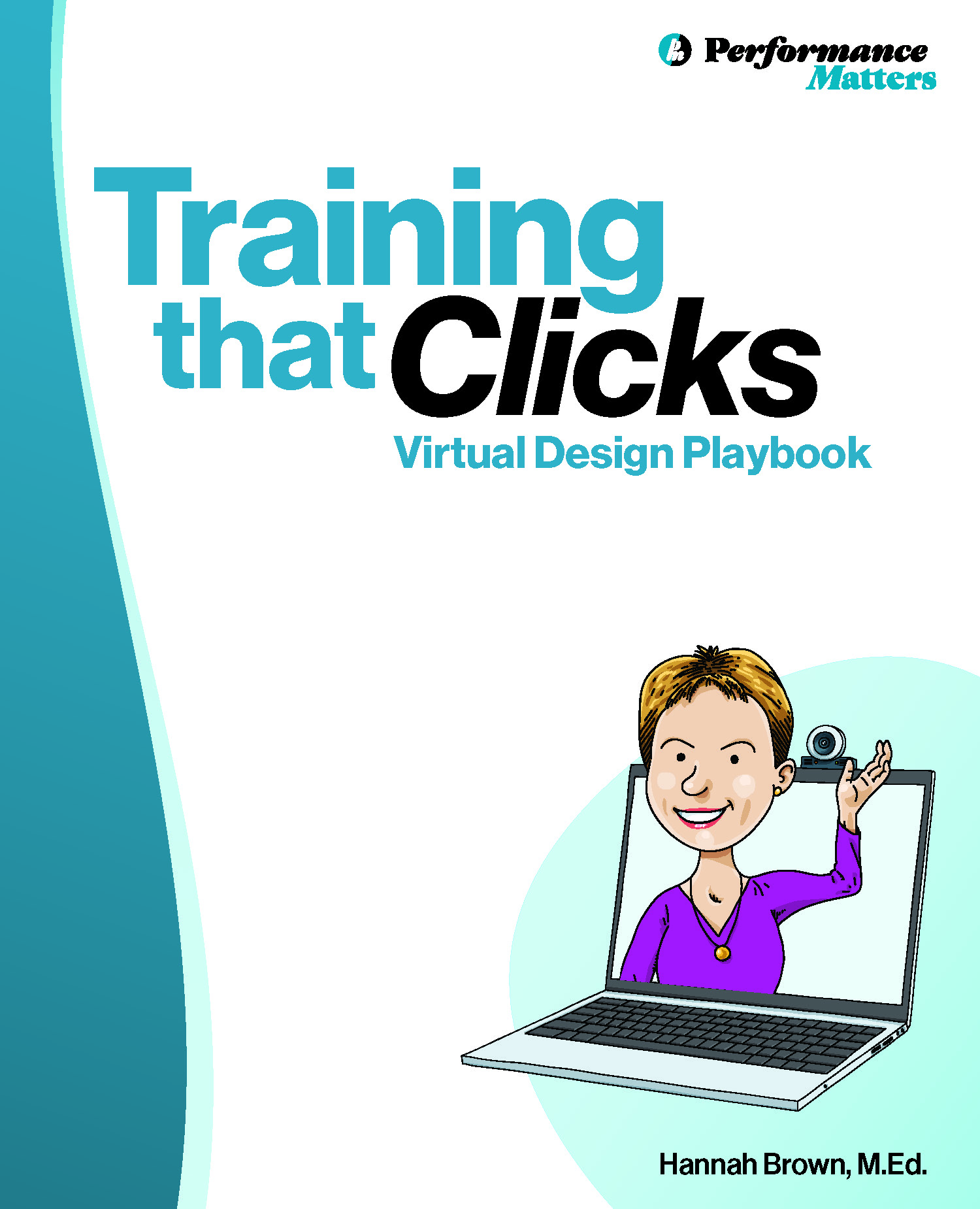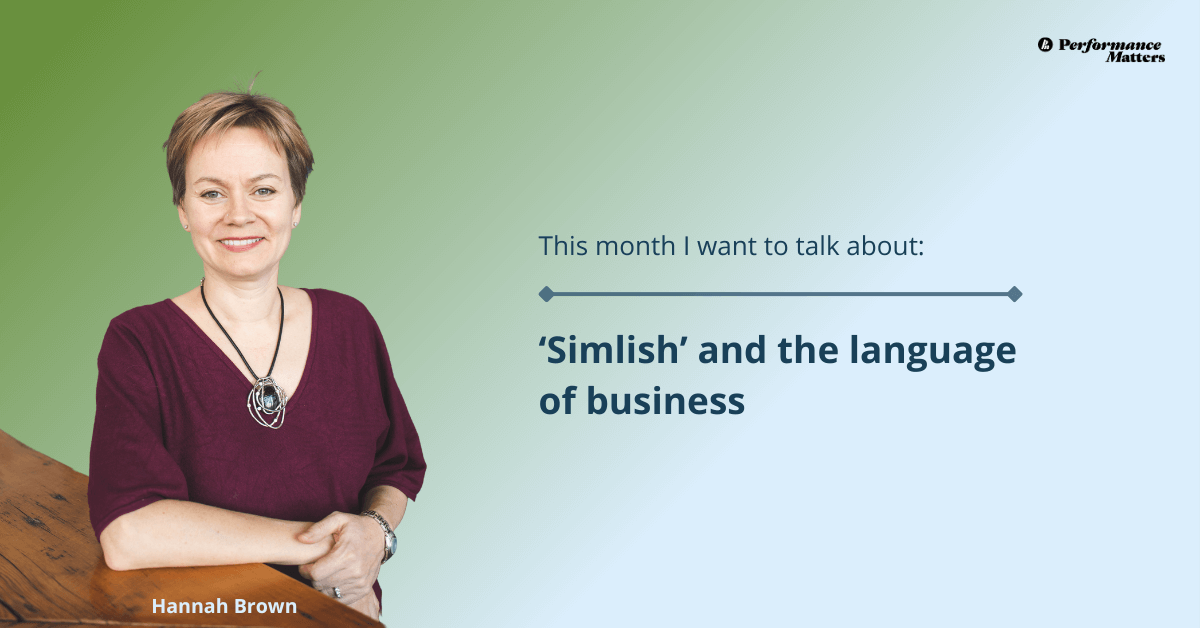My daughter plays The Sims, a life simulation video game. She builds houses and buildings and creates cities. She makes characters and guides them through their video game lives. The characters make noises and talk, but because the game is international, it’s a made-up language – Simlish.
When I work with clients, my job includes quickly learning their language – their acronyms and jargon. I’ve realized there are different languages or dialects within companies. Marketing has its jargon, and operations has unique acronyms, and sales has its slang. All of these, however, are based in the language of business. They’re all anchored in concepts like profitability, market share, streamlined processes and strategic objectives.
Then there’s learning and development. We have our own language that is not anchored in the language of business. We talk about learning or even performance objectives but not business metrics. We say things like ‘transfer of learning’ and ‘Bloom’s taxonomy’, and ‘levels of learning.’
There’s an ongoing challenge to align training efforts to business goals – to demonstrate the impact and value of the learning function. A big part of our challenge is that we’re speaking a different language than our clients. We’re speaking English, and they’re all talking the universal language, Simlish.
Be a business person first
I attended and spoke at the ATD International Conference in May. Like we all do when at a conference, I ran around trying to fit in as many sessions as my body and brain could manage. I had my ‘A-list’ and my fallback sessions. I did reconnaissance work for my next book, which will be about the business of training. I attended sessions like:
- 4 Essential Steps to a Results-Driven Employee Learning Strategy
- Recession Proofing Learning and Development: Gaining Executive Confidence
- Align Your Talent Development Function With Dynamic Business Needs
- Building Business Acumen: What Your CEO Needs You to Know
I really liked the last session, Building Business Acumen: What Your CEO Needs You to Know. Kevin Cope said we need to:
“Think of ourselves as business people first, who happen to work in learning and development.”
I couldn’t agree more!
Scale the language of business
While the language of business is universal, I also believe it scales depending on your level or role in the organization.
Instructional designers and facilitators
For instructional designers, facilitators, trainers, etc., their focus is on performance. Designers and facilitators need to ensure the training they provide can be applied, addresses the performance need and therefore supports the business results. They need to understand their participants’ work environment, challenges, and obstacles to doing their work.
Learning and development managers
Managers in learning and development need to be ‘bilingual.’ They need to speak ‘learning and development’ and ‘business.’ As the liaison between the organization and their team, they translate the business strategy and directives into learning and development terms so their team can implement it.
Learning and development senior leaders
VPs and executives in learning and development need to be ‘multilingual’. In addition to speaking learning and development, they need to speak the common business language AND the dialects of the other functional areas. They need to have business-focused conversations with the functional areas in their organization – marketing, finance, sale, operations, etc. Senior leaders need to be equally comfortable talking with their L&D function and peers across the organization. They need to communicate at a strategic level to ensure their training efforts have a measurable impact on the organization’s strategic objectives.
If all levels in the learning function speak the language of business, great things can happen! The learning and development function can move from operating as order takers to being a valued business partner.
In case you missed it
I’ve shared some additional posts online. I’ve been exploring training from an organization’s perspective and learning from an employee’s perspective. Here they are in case you missed them.
- Curriculum for municipal asset management training – (video link)
- Speaking at ATD – (video link)
- Reflections on ATD 2023 conference – (video link)

- Book site – to order your copy or write a review on Amazon: https://trainingthatclicks.ca/
- LinkedIn – read about the journey: #bookbyhannah and #trainingthatclicks.



